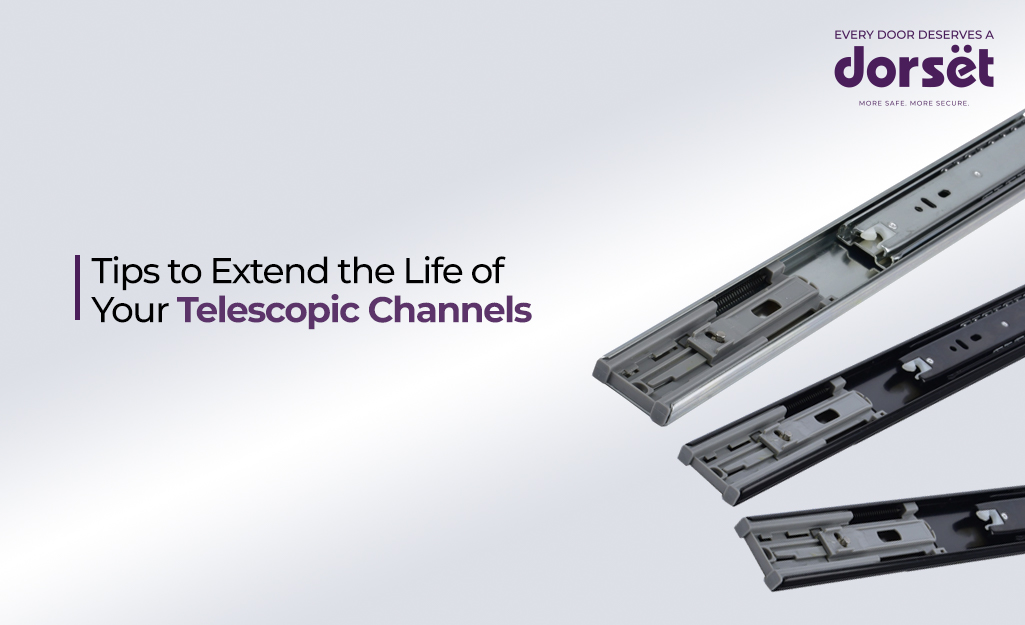
Your telescopic channels work harder than you probably realise. Every time you pull out a drawer to take out a pot, pan, or just a spoon, these precision-engineered components are handling loads, absorbing impacts, and maintaining smooth operation. Yet most people install them and forget about them until something goes wrong. With proper care and attention, you can significantly extend their lifespan and have them working perfectly for years.
Understanding What Wears Out Telescopic Channels
Telescopic channels usually fail in a few common ways, and knowing them can help you avoid problems. The first is bearing wear. The tiny ball bearings or rollers that make the channel slide smoothly get damaged over time due to regular use, dust buildup, or lack of oiling.
Another issue is track misalignment. If the screws become loose or the installation wasn’t perfectly straight when it was first done, the channels start to jam or feel uneven, which causes faster wear and tear.
Overloading is also a big reason for failure. Every channel is designed to carry a certain weight, and if you keep putting in more than it can handle, the parts inside wear out much faster, even if it doesn’t show right away.
Proper Installation Sets the Foundation
The life of your telescopic channels depends a lot on proper installation. Even small mistakes in alignment can create pressure points that wear them out early. Always use a level and make sure both channels are straight, parallel, and at the same height.
Don't skip the pilot holes when mounting. If you drive screws straight into wood without them, the wood can crack or the screws may loosen over time, making the channels shaky and harder to use.
Consider the mounting surface too. Channels work best on strong, flat surfaces. If you fix them onto thin or flexible material, they can bend and jam. Dorset’s I Box drawer system gives you quality drawers in different height and weight configurations that will pair perfectly with our telescopic drawer slides.
Load Management Prevents Premature Failure
Respecting weight limits is important for long-term durability. Most quality telescopic channels handle their rated loads well, but consistently operating at maximum capacity accelerates wear. Try to keep regular loads at 70-80% of rated capacity when possible.
Distribute weight evenly within drawers and trays. Point loads or uneven distribution create unequal stress on the drawer slides. A drawer loaded heavily on one side forces one telescopic channel to work harder than the other, leading to uneven wear and potential binding.
Lubrication: The Key to Longevity
Regular lubrication is perhaps the most important maintenance task for telescopic channels. The specific lubricant depends on your channel type. Ball bearing channels typically use light machine oil or specialised bearing grease, while polymer bearing channels might need silicone-based lubricants.
Apply lubricant sparingly to bearing surfaces and tracks. Too much lubricant attracts dirt and debris, creating an abrasive paste that accelerates wear rather than preventing it. A few drops in the right places work better than flooding the mechanism.
Clean before lubricating. Applying fresh lubricant over dirt and old grease just traps contaminants against wearing surfaces. Use air or a brush to remove debris first, then apply lubricant to clean surfaces.
Cleaning Prevents Abrasive Buildup
Dust, crumbs, and other debris act like grinding paste inside telescopic channels and wear them out. Regular cleaning helps stop this damage. In most cases, using compressed air is enough to blow out loose dirt without taking anything apart.
For channels in dusty or dirty environments, more thorough cleaning may be necessary. Take out the drawer or tray, clean the channels with a degreaser, and then apply fresh lubrication.
Think about where the channels are used. In kitchens, grease and food bits build up. In workshops, it’s sawdust and metal shavings. In offices, it’s paper dust and toner. Each place needs the right kind of cleaning.
Recognising Early Warning Signs
Catching problems early prevents minor issues from becoming major failures. Listen for changes in how your drawers open and close. New squeaks, grinding sounds, or resistance when you open your soft close channel can indicate developing problems that maintenance can often resolve.
Check if the channels slide smoothly in and out. They should move easily without getting stuck or feeling rough. If you notice tight spots or extra force is needed, it may be a sign of misalignment or dirt.
Also, look closely for signs of wear. Shiny patches on the tracks, loose screws, or bent parts usually mean something is wrong. If not fixed early, these issues can get worse over time.
Replacement vs. Repair Decisions
Sometimes maintenance isn't enough, and you need to decide between repair and replacement. Minor issues like loose mounting or insufficient lubrication are usually worth fixing. More significant problems like worn bearing races or bent tracks often make replacement more cost-effective.
Consider the channel's age and overall condition when making repair decisions. Channels nearing the end of their expected service life might be better replaced than continuously repaired, especially if failure could cause damage to the drawers or its contents.
If you are considering replacement, Dorset’s soft close channel range is designed for smooth, quiet performance and built to last, making them a reliable upgrade.
Maximising Your Investment
Quality telescopic channels represent a significant investment in smooth, reliable operation. With proper installation, reasonable load management, regular cleaning and lubrication, and attention to early warning signs, you can extend their service life well beyond minimum expectations.
Treat them well, and they'll provide years of smooth, reliable service that makes daily tasks easier and more pleasant.